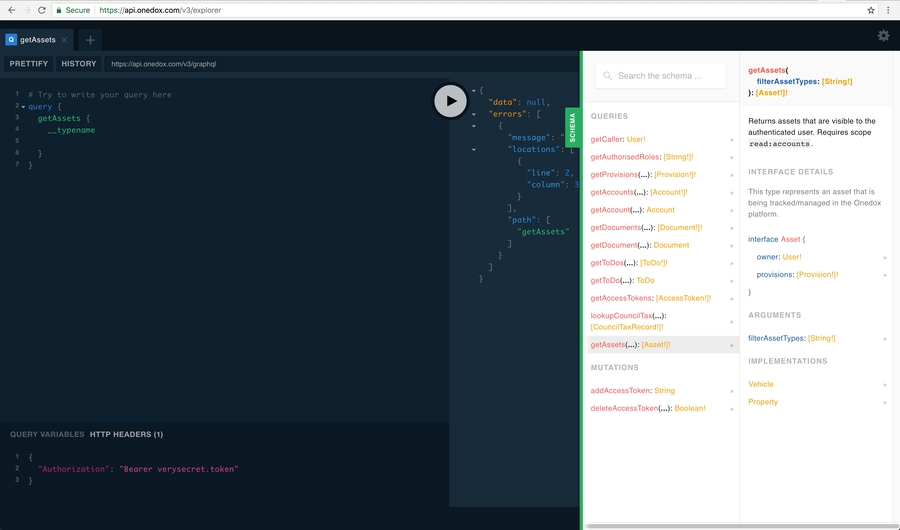Using GraphQL
The GraphQL endpoint and Explorer
Having worked our way through a number of iterations of REST APIs we are now building exclusively on our federated GraphQL API.
We already use this GraphQL API to power our white-label UI applications and have found that the query flexibility given by GraphQL allows for rapid development whilst providing a well structured data model.
The GraphQL endpoint and Explorer
The API is accessible through a single endpoint:
https://api.ideavate.co/v1/graphqlYou can take a look at some example queries.
Communicating with GraphQL
Because GraphQL operations consist of multiline JSON, for interactive exploration we recommend using the Explorer to make GraphQL calls. You can also use cURL or any other HTTP-speaking library.

To query GraphQL using cURL, make a POST (or GET) request with a JSON payload. The payload must contain a string that contains the GraphQL commands to run such as query:
POST https://api.ideavate.co/v1/graphql
Authorization: Bearer verysecret.accesstoken
Content-Type: application/jso
{
"query": "query { getAuthorisedUser { scope }}"
} For details on the Authorization header see GraphQL Authentication.
Last updated